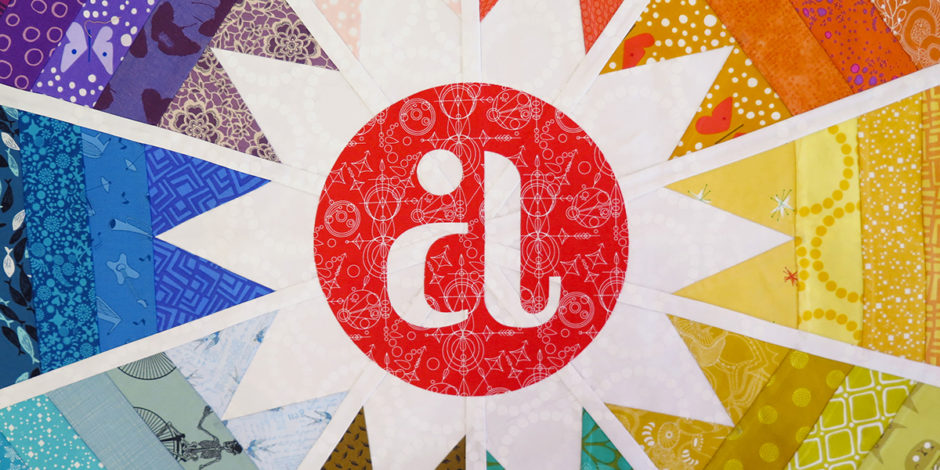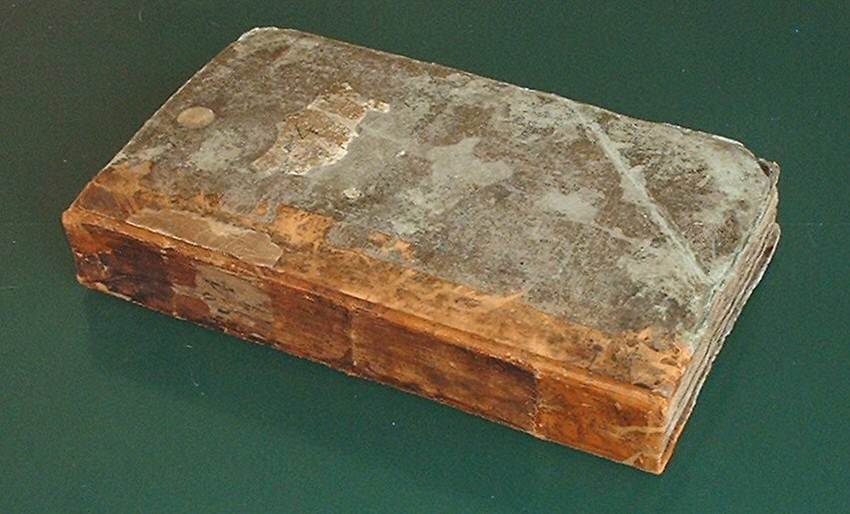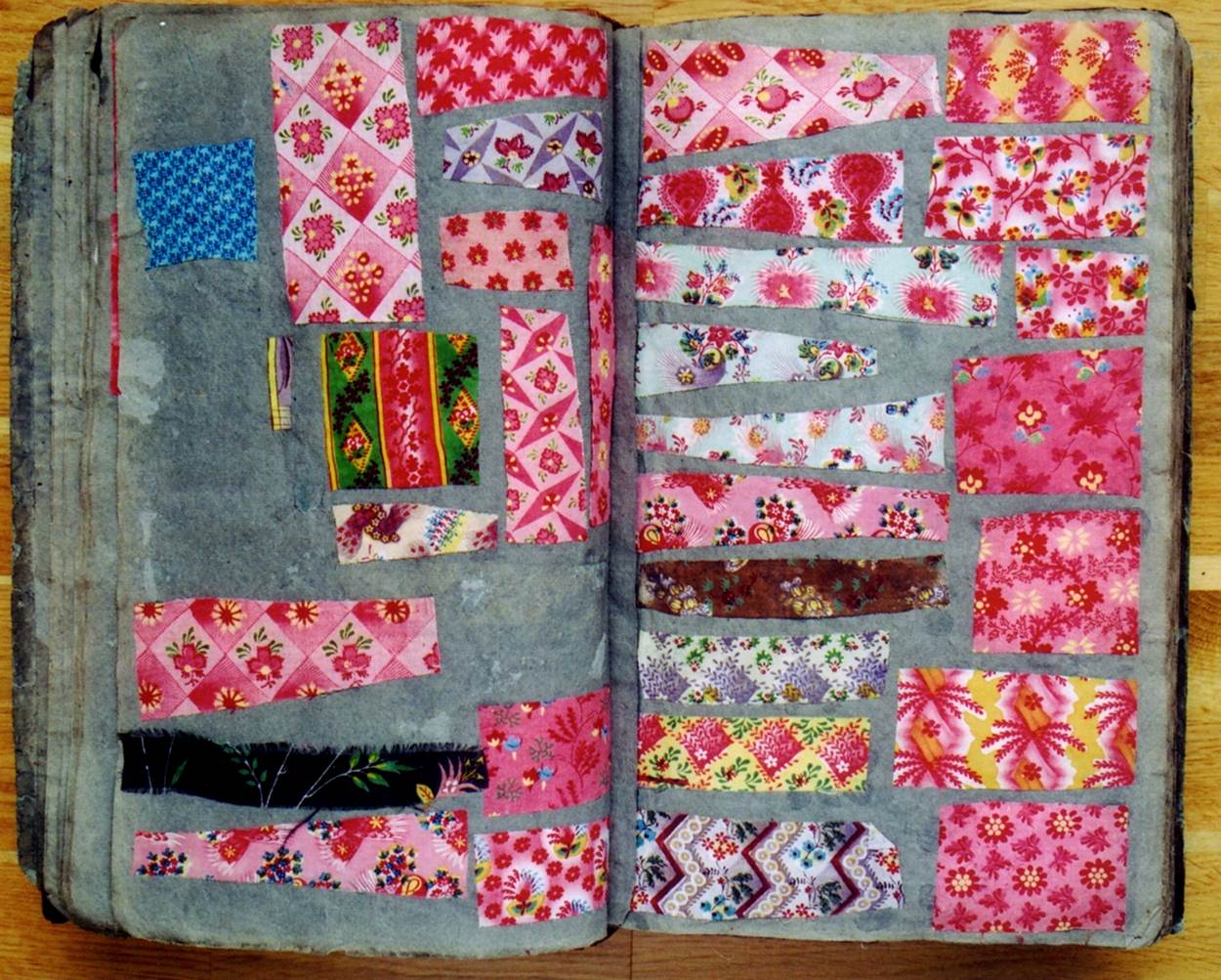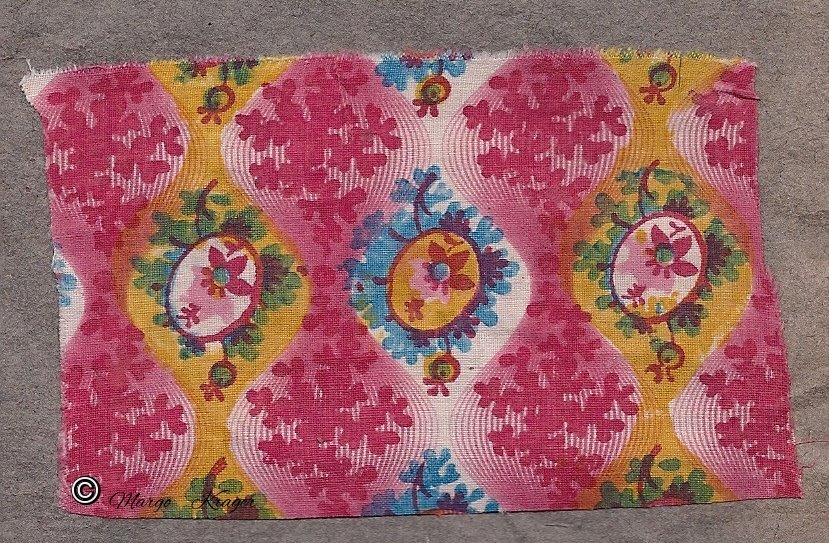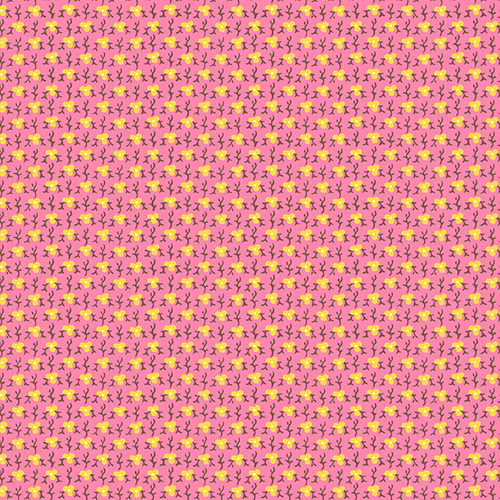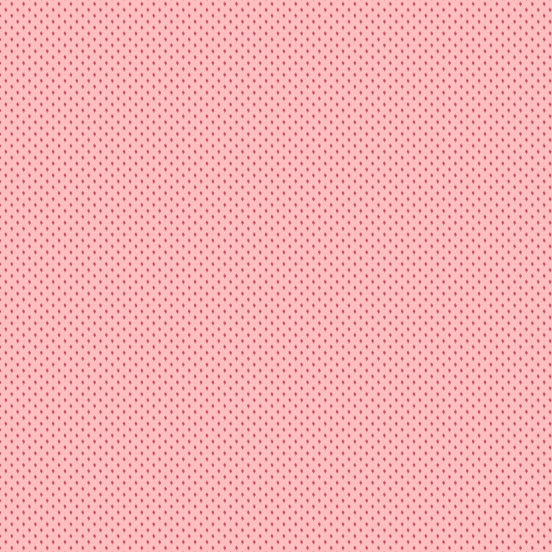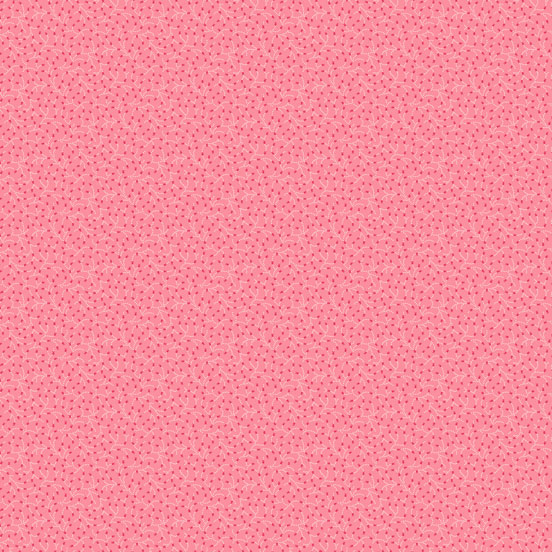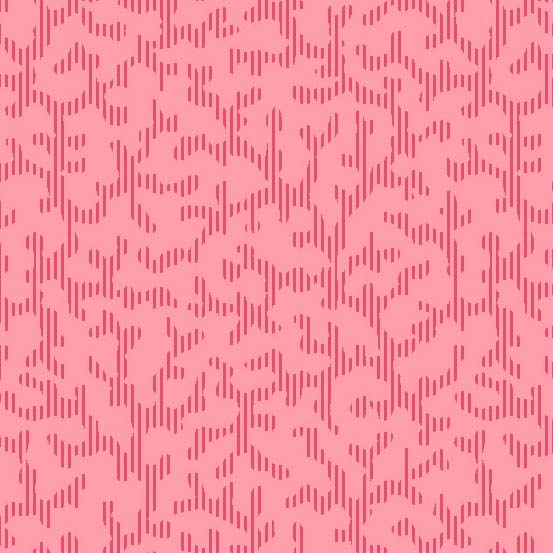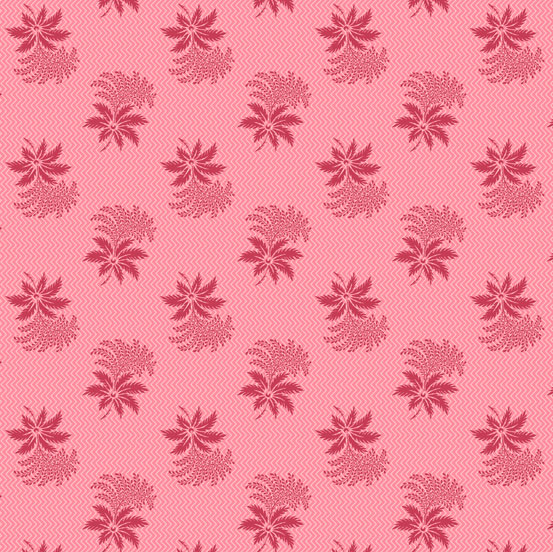A NOTE ON THE AUTHOR: Margo Krager, owner of ReproductionFabrics.com, a website and storefront located in Northfield, MN, has been a fabric retailer since 1984. She has spent over 20 years researching historic cotton printed and yarn-dyed fabrics used in quilts and garments, gives lectures on historic dye, and print technologies and does hands-on workshops on Center Medallion Quilts.
Margo received a Bachelor’s of Science degree in Medical Technology in 1970 from Michigan State University and worked in that field for 15 years. In 1984 she switched needles and became a fabric retailer. Since that time she has also done graduate level work in History at Montana State University, distance learning through the Quilt Studies Program at the University of Nebraska-Lincoln and published a professions paper, The Calico Trade Shirts on the Journey with Lewis and Clark, with the Textile Society of America.
Her design inspiration comes from the 9 antique fabric sample books she owns.
Design Inspiration: The Dargate Book
by Margo Krager
This fabric sample book was obtained from an estate sale at the Dargate Auction House in Pittsburgh, Pennsylvania in the summer of 1997. The ledger-style book (10” X 16”) contains 330 rag-paper pages with fabric samples attached with either horse hoof or fish bone glue. The book had been kept in a slipcase, away from light for about 80 years. Consequently there has been very little deterioration of either the fabrics or the dye colors (archival environment…rag paper, archival glues and no light). It contains approximately 1,750 fabric swatches of c. 1830 French dress goods. Both Dr. Virginia Gunn, Professor of Costume at the University of Akron (now retired) and Susan Meller, author and textile historian, have dated the samples c. 1830.
In 1997, I had my mail order company in an old country store in the Dutch farming community of Churchill, MT. UPS was on strike late in the summer of 1997. Some fabric wholesalers suspended shipments with a ‘wait and see’ attitude. Others began to ship goods through the US Postal Service. One day in late August, my postal carrier brought the mail—letters with orders, boxes with fabric and notions, and then he handed me a large flat box. From the label I knew it was the book. Not insured, not registered. Somehow with the United State Post Office in extremis, this very special package had arrived.
There is no provenance on the book, no inscriptions, no notations, and no dates. I took it to Dr. Virginia Gunn, professor of costume at the University of Akron and sent scans to Susan Meller, author of Textile Designs. They both dated the book c. 1830 and probably French. After numerous hours of turning pages and admiring the wide variety of designs, I knew this would be a great source of reproduction fabric designs, not only for quilters but also for costumers. My goal has been to reproduce as accurately as possible the designs, scale and colors of the samples in the Dargate Book.
Some Dargate pinks…
Small and large prints in two or three shades of pink or red (often referred to as Double Pinks, 2 or 3 Reds and Cinnamon pinks) have been a perennial favorite of the textile industry. The Dargate Book has a large assorted of double pinks as well as many with highlights of yellow!
The only natural dye stuffs (a substance that can be used as a dye or from which a dye can be obtained) with an affinity for cotton are indigo, some berries and tree barks. Other natural dyes such as madder need a mordant to bind them to the fabric. The word mordant is from the French, mordre, meaning ‘biting’ or ‘caustic’. Mordants are salts of common chemicals such as aluminum (alum) or iron. They form a bond between the dye and the cloth.
Different mordants produce different colors in the madder dye bath while different strengths of the same mordant give different shades of a hue. An aluminum acetate mordant (alum) produces a range of colors from deep red to a very pale pink and was used historically for block printing as well as copper plate and then roller printing.
For a double pink, the fabric was first printed in a pattern with a weak solution of alum and allowed to dry/age and then over printed with a companion pattern in a stronger alum mixture and dried again.
The next step was a madder dye bath. The mordants bonded the dye and cloth together for a lively double pink design. Occasionally a design with three pinks/reds was produced using three different strengths of the mordant.
Today’s modern fiber reactive dyes are able to reproduce these much loved designs.
DARGATE POLYCHROMES: A-7920-BE
TRINKETS: A-8158-E
TRINKETS: A-8156-E
DARGATE VINES: A-8201-E
DARGATE VINES: A-8197-LE
